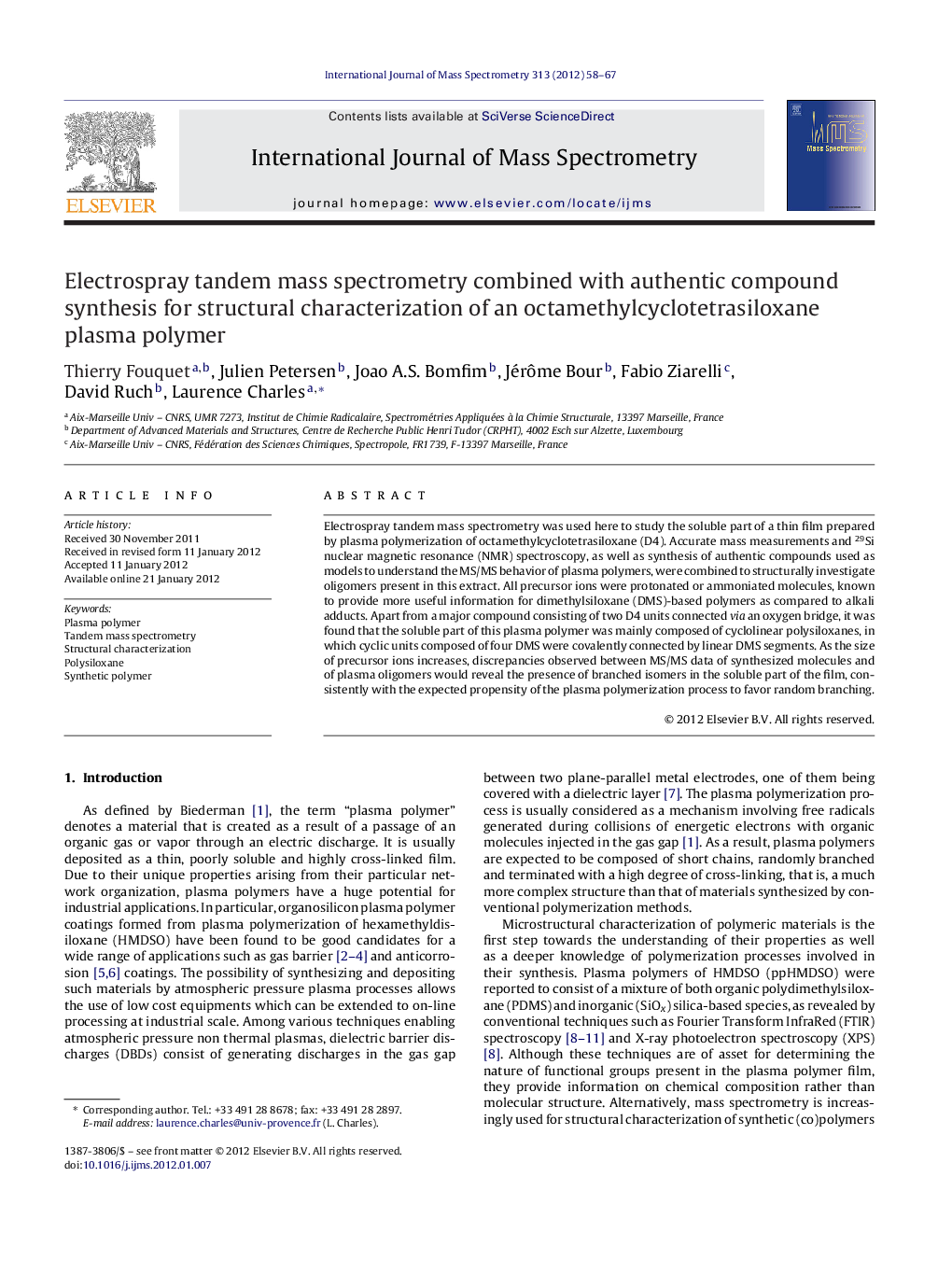| کد مقاله | کد نشریه | سال انتشار | مقاله انگلیسی | نسخه تمام متن |
|---|---|---|---|---|
| 1193156 | 1492297 | 2012 | 10 صفحه PDF | دانلود رایگان |

Electrospray tandem mass spectrometry was used here to study the soluble part of a thin film prepared by plasma polymerization of octamethylcyclotetrasiloxane (D4). Accurate mass measurements and 29Si nuclear magnetic resonance (NMR) spectroscopy, as well as synthesis of authentic compounds used as models to understand the MS/MS behavior of plasma polymers, were combined to structurally investigate oligomers present in this extract. All precursor ions were protonated or ammoniated molecules, known to provide more useful information for dimethylsiloxane (DMS)-based polymers as compared to alkali adducts. Apart from a major compound consisting of two D4 units connected via an oxygen bridge, it was found that the soluble part of this plasma polymer was mainly composed of cyclolinear polysiloxanes, in which cyclic units composed of four DMS were covalently connected by linear DMS segments. As the size of precursor ions increases, discrepancies observed between MS/MS data of synthesized molecules and of plasma oligomers would reveal the presence of branched isomers in the soluble part of the film, consistently with the expected propensity of the plasma polymerization process to favor random branching.
Figure optionsDownload high-quality image (156 K)Download as PowerPoint slideHighlights
► CID was used to investigate the structure of a plasma polymer.
► Authentic compounds were synthesized to assign product ions in MS/MS.
► This plasma polymer was found to be a branched cyclolinear polysiloxane.
Journal: International Journal of Mass Spectrometry - Volume 313, 1 March 2012, Pages 58–67